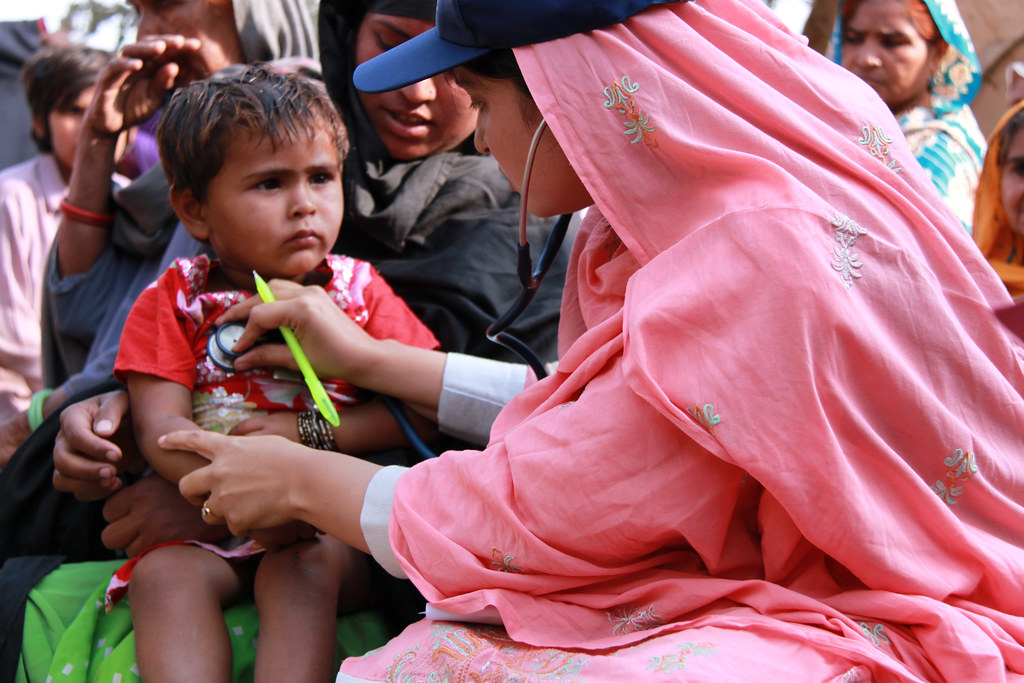Standard policy prescription for closing the technological divide focuses on equalizing access to technologies and the capacity to adopt them. What is missing from this policy approach are measures that address the social tendency to share information and interact with others with similar socioeconomic attributes, which contributes to uneven technology diffusion. Guest blogger Hoi Wai Jackie Cheng, economist at the United Nations Department of Economic and Social Affairs (UN DESA), argues that efforts to fully close existing technology gaps should involve strategic use of social networks to ensure broad-based technology diffusion that also reaches marginalized members of our community.
The challenge of bridging the digital divide
The world is beset by a persistent technological divide across countries and communities. The COVID-19 pandemic provides a poignant example of how uneven technology adoption leads to uneven socioeconomic outcomes. As many developing countries face constrained access to COVID-19 vaccines, they are highly vulnerable to renewed waves of infection and are projected to experience an overall slower recovery than developed countries. This uneven recovery undermines efforts to reduce global inequality.
To bridge the technological divide, it has been standard to call for equalizing access to technologies and the capacity to adopt them. What it typically entails are a myriad of policy actions to raise technology awareness, improve education and training, provide financial support for technology adoption, and reform institutions – such as the intellectual property regime – to facilitate technology diffusion. These are worthy policy actions to pursue. One caveat, however, is the implicit assertion often embedded in this menu of policy options, i.e. once a technology is made available for all and everyone is technically and financially capable of using it, the elimination of the divide will follow. In this case, each individual does his or her own cost-benefit analysis and everyone would eventually adopt superior, welfare-enhancing technologies.
This way of policy thinking risks failing to account for the fact that people do not make decisions in a vacuum. Rather, our decisions are heavily influenced by what others in our social networks do. And people could end up making very different technology adoption decisions, even when they have similar resources and preferences.
Social learning effect – pervasive, persistent and clustered
Empirical evidence across industries – health, agriculture, finance and others – has shown that technology adoption behaviors of individuals and firms are noticeably affected by others in their social networks. Social learning – through word-of-mouth communication, observation of others’ behaviors and peer pressure – has a pervasive influence on how information about technology spread and what technologies are adopted, especially when a technology is complex or when it is significantly different from previous technologies.
The consequences of this social learning effect can be felt for months, or longer. Research on technology adoption at sectoral- and firm-level has shown it could have decades-long implications for technology adoption in some cases. This possible long-term effect could be a concern when one considers that there is an observed tendency for people and firms with similar attributes to associate with each other, which could result in technology diffusion that is largely confined within clusters, e.g. groups of high-performing firms or highly-educated individuals.
A field experiment in Indian villages show that farmers were more likely to adopt a new technology when the suppliers of the technology belonged to the same sub-caste as them. This tendency could create a vicious cycle in which clustered technology diffusion further reinforces network structures that feature groups of individuals/firms possessing vastly different levels of technological capabilities, maintaining or even exacerbating economic inequality. A policy approach that augments the social network perspective is important in mitigating this social tendency to cluster and in ensuring widespread technology diffusion.
Lessons on leveraging social networks to close the technology gap
The emerging empirical evidence from a wide range of country and industry settings has provided some lessons regarding how to leverage social networks to promote technology diffusion and close the technology gap.
First, identifying seed nodes – i.e. individuals or firms that are first to be introduced a new technology – that occupy central positions in a network has shown to be effective at promoting technology diffusion. It might seem obvious, but the question is how to identify a network’s “centers”. Intuitively, a “central” individual or firm could be one connected to many others, or one that is linked to many well-connected ones. But it could also be one with high “clustering”, meaning one connected to many pairs of individuals or firms already directly associated with each other. In social terms, someone with higher clustering means his or her friends tend to know each other. High clustering reflects a local network environment where those connected to the seed nodes can reinforce each other’s behavior. Seed nodes with high clustering are likely more effective at promoting technologies when the value of such technologies to a user depend on the total number of users, e.g. a P2P payment app.
Second, seed nodes that are similar to the average population and encouraged by performance-based incentives to communicate technology-related information tend to be the most effective. Policymakers might be inclined to choose those that are technologically most sophisticated in a community to be the seed nodes, but research has shown that technologically sophisticated nodes that are too dissimilar to the average population in terms of socioeconomic attributes, such as income level, wealth, and educational background, etc., could be ineffective.
Third, targeting centrally-located seed nodes should be complemented by strategic selection of seed nodes that can reach marginalized members of a network. In many countries, social exclusion of women and their relative lack of social links mean that they are at a disadvantage position to benefit from interventions that target central seed nodes. Recruiting women as seed nodes can help to mitigate this issue. An alternative measure is to change the network structure so that technology can more easily reach women. Creating social links between female workers in a community has shown to improve their access to technology information and productivity.
Conclusion
Advances in information technologies such as broadband and social media have served as a positive force on closing the technological divide, but the tendency for people with similar socioeconomic backgrounds to cluster could counteract it. Understanding how to leverage social networks for closing the technology gap is important in formulating measures that complement the standard policy actions. The challenge of creating a world where no one is left behind is daunting, but we will be a step closer if we are to make use of all available policy levers. Strategies that utilize the powerful and ubiquitous networks of individuals and firms in driving technology adoption behaviors should be among policymakers’ toolkits.
The views expressed in this post are those of the author and do not reflect those of the International Development LSE blog or the London School of Economics and Political Science.





